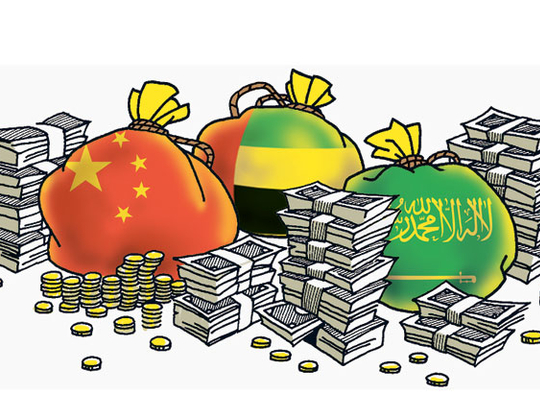
Financial sector holdings in developed nations continue to dominate the portfolios of sovereign wealth funds (SWFs) worldwide as banks benefit from bailout and stimulus packages implemented by several OECD nations.
While a lot of smaller banks succumbed to the recession in the United States and Europe over 2008 and 2009, the "too big to fail" institutions have been the recipients of trillions of dollars in bailout cash. These are now beginning to pay back this cash, clean up their balance sheets and emerge profitable once again.
Which is all good news for the sovereign funds that are invested in them.
According to a new index that tracks the holdings of these funds in publicly-traded entities, six of the top 10 holdings are in the financial sector.
Las Vegas-based Sovereign Wealth Fund Institute and Park Alpha, a subsidiary of the institute that provides consulting services to investment firms and SWFs, launched the Sovereign Wealth Fund Strategic Index (SWFSI) last month.
The SWFSI is a market capitalisation-weighted index that gauges strategic sovereign fund investment in public equity markets around the world. Currently, the index includes 37 publicly-traded equity securities and serves as a benchmark to track publicly-traded strategic investor performance.
The index is a good way to illustrate strategic government cross-border equity investment flows, the SWF Institute said in a note. The index is rebalanced on a semi-annual basis.
Gauging performance
"The [index] can provide investors, policymakers, researchers, media and economists with a means to gauge the level and performance of sovereign wealth fund strategic investment in public equity markets," said Carl Linaburg, senior vice-president and co-founder of the SWF Institute.
It may be the perfect time to launch such an index. The value of the combined global assets of sovereign funds is estimated to have breached the $4 trillion (Dh14.6 trillion) mark last month, led by a strong expansion in the assets of commodity-backed funds, according to SWF Institute estimates.
Sovereign funds have also ramped up activity this year, according to research released last month by the Monitor Group.
Following frenzied investments in failing American and European financial institutions during the winter of 2007-08 and a bailout of domestic banking sectors in early 2009, sovereign funds generally shied away from the financial sector.
At the beginning of 2010, however, they seemed to regain their appetite for investments in financial services, Monitor data shows.
However, the character of these investments differs from that of earlier years, with sovereign funds diversifying their financial sector investments.
Rather than taking direct equity stakes in banks or recapitalising their balance sheets, SWFs invested in alternative assets.
According to Monitor, the Qatar Investment Authority (QIA) remains "one of the most intriguing SWFs" and is a case study on changing investment behaviour by sovereign funds.
In 2009, QIA took a break from investing for the first six months of the year. Since then, it has been rapidly deploying capital around the globe, investing $32.5 billion during the second half of 2009.
The first half of this year saw this breakneck speed of investments continuing. QIA accumulated "trophy" assets, such as the Raffles Hotel and Harrods.
It has also invested in a range of sectors and geographies this year, from French utility company Veolia Environnement, to creating a $1 billion fund to invest in Indonesian assets.
In the first half of 2010, sovereign funds invested in a wide range of sectors, as they continued to diversify their portfolios. However, their publicly reported investment activity suggests that three sectors — financial services, natural resources and utilities — were particularly attractive. These accounted for nearly three-quarters of such funds' publicly reported expenditure during the period and just under half of the deals.
Away from these sectors, investments have been varied. Some funds invested in manufacturing and engineering industries such as transportation, automobiles, aviation and construction, while others were interested in technology companies with strong intellectual property regimes, such as communications, health care and biotechnology. For some funds, hotels and real estate were notable sectors.
In the first half of 2010, SWFs continued to look further afield for investment opportunities. Apart from the usual investment geographies such as the OECD, East Asian or South-East Asian markets, as well as the Middle East and North Africa, a growing number of sovereign fund investments occurred in countries such as India, Russia and those in sub-Saharan Africa.
While the total value of these investments remains comparatively small — around $1.5 billion, according to Monitor data — it represents an ongoing trend of the geographic diversification of sovereign fund portfolios.












